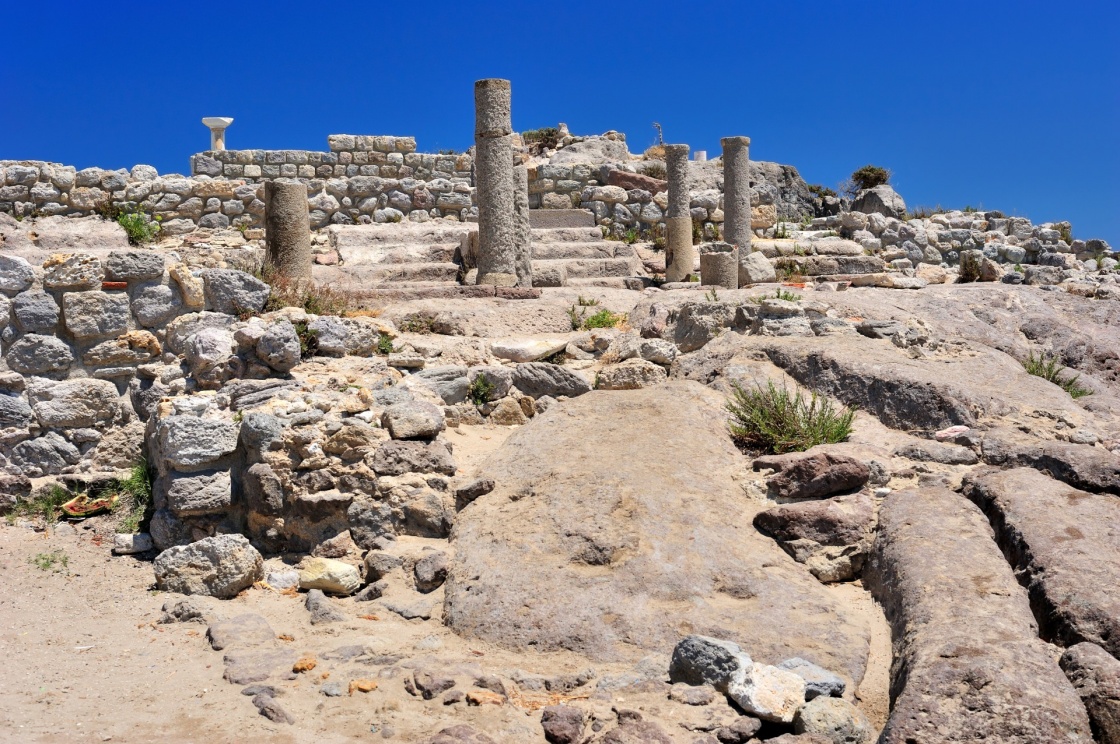Kos has a long and rich history characterised by the many different civilizations that ruled the island. It has been inhabited since the beginning of the third millennium BC, during the early Copper Age when large numbers of population moved in the Aegean territory. According to the findings in “Aspri Petra” cave in the small town of Kefalos, Kos Town has been constantly inhabited until present days since the end of the third millennium BC.
The island was at its peak during the second millennium BC when the Minoans settled on the island. The peoples of Kos even took part in the Trojan War, sending over thirty ships. A new era of development followed when the Dorians ruled the island and in the 7th and 6th century BC. Kos along with the cities of Lindos, Ialysos and Kamiros on Rhodes and Cnidus and Halicarnassus in the coast of Asia Minor created an alliance of political, economic and religious interest, called the Dorian Hexapolis (Greek for six cities). The island eventually joined the Athenian coalition after the Athenians defeated the Persians in the 5th century BC .
The island flourished due to its natural resources, trade, silk manufacture and its bustling market place. It is also re-known for its artists and scientists with Hippocrates being the most famous one. He was born during the rule of the Athenians, and has been known as the Father of Medicine. The island is well-known for having the world's first School of Medicine. Its hospital treated people from throughout the Mediterranean.
After oligarchic and tyrannical regime, democracy arrived in 394 BC and the island experienced significant growth in economics and education. During the Hellenistic period the island attained the zenith of its prosperity. By 82 BC, the Roman Empire took control and governed until 53 AD. The Byzantine period was also a time of growth and development, even though the island suffered many raids by pirates and large parts of it were destroyed because of earthquakes.
The Venetians conquered Kos in 1204 AD and ruled the island until they sold it to the Knights of Saint John in 1315 AD. A fortress the Knights built in the 14th century AD in order to prevent the Turkish invasion, still stands at the entrance of the harbour in Kos Town. In the 15th century AD, the Turks invaded and took ownership until 1912. After the war with the Turks, the Italians invaded and ruled until 1943.
A major earthquake struck the island in the 1930s that destroyed many of the ancient structures. The German army arrived in 1943 and displaced the Italians. The British army freed the island from the Germans in 1945 and brought an end to the tremendous suffering they had been experiencing. Kos belonged to Britain until 1948 when it united with Greece part of which remains until today.






 'Ruins of ancient town Astipalea in Kefalos (Kos island, Greece)' Kert / Shutterstock
'Ruins of ancient town Astipalea in Kefalos (Kos island, Greece)' Kert / Shutterstock